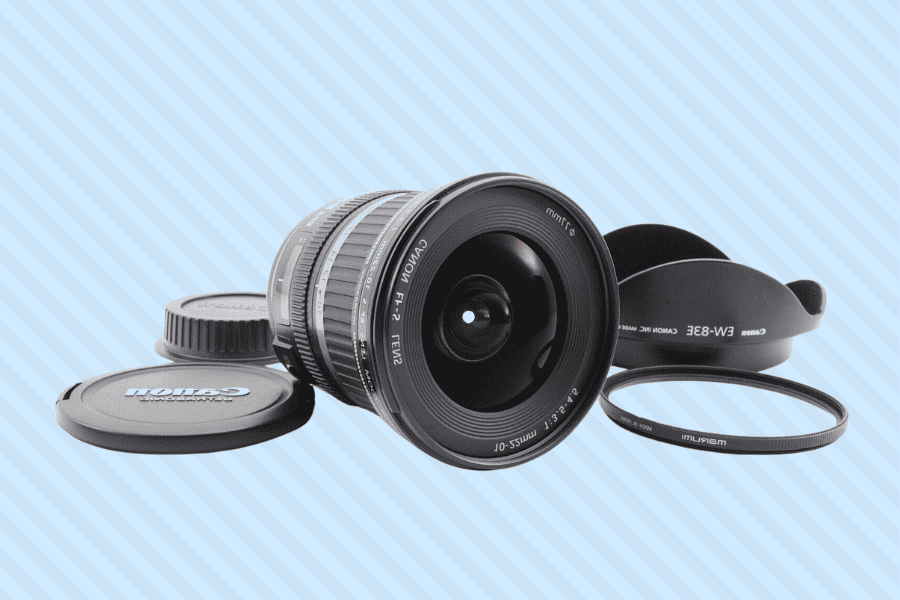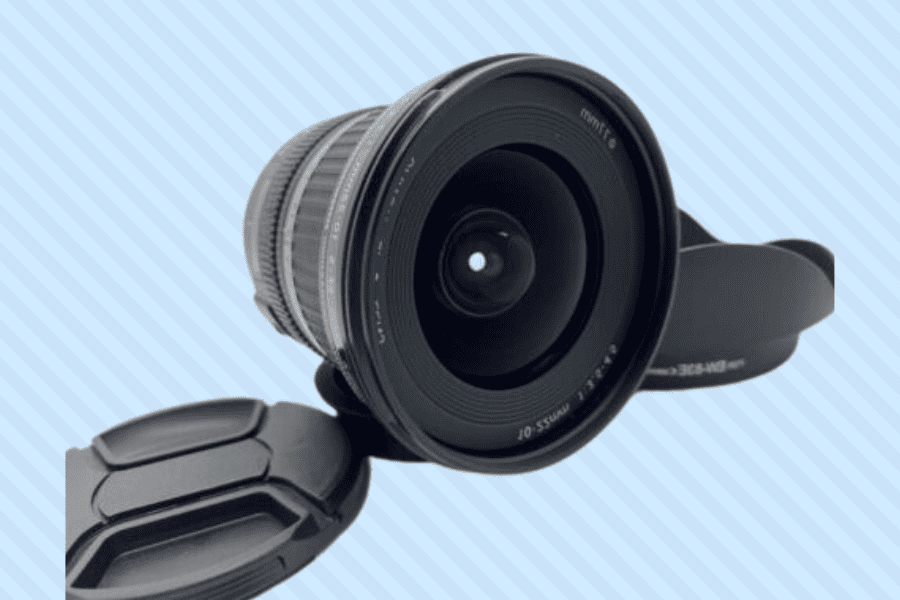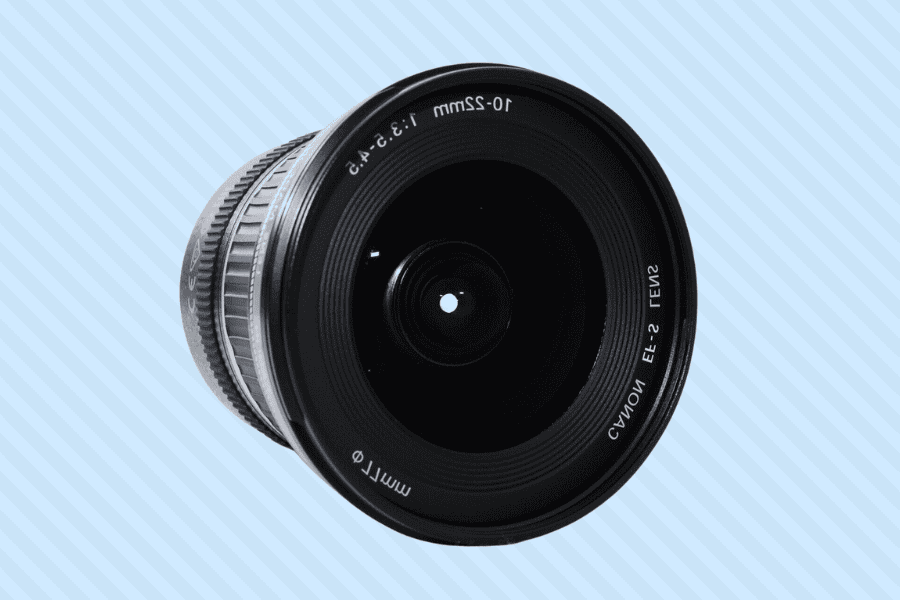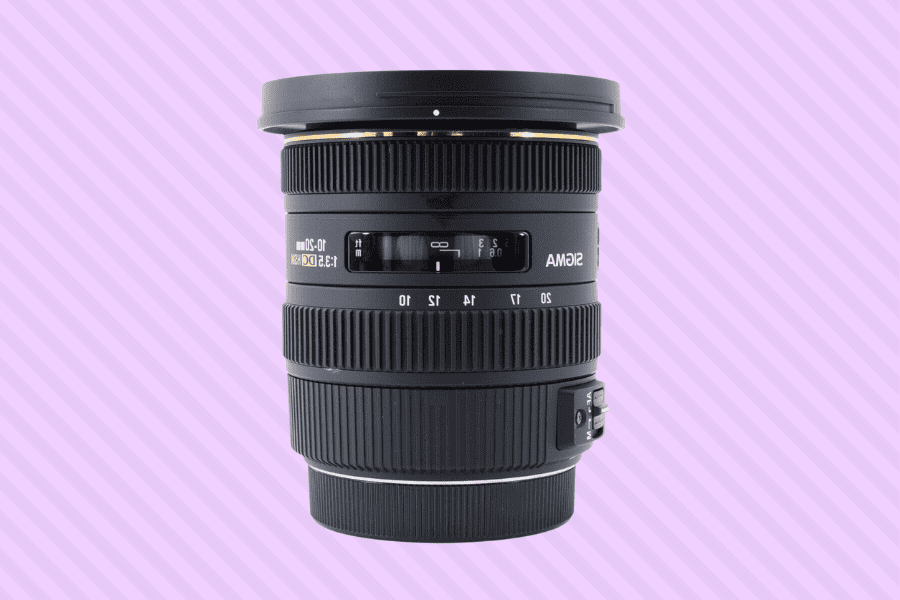
As an Amazon Associate we earn from qualifying purchases.
If you are capturing real estate interior photos in tight spaces, you might need to equip your Canon camera with a wide-angle lens to give it a broader field of view. With this Canon 10-22mm vs Sigma 10-20mm comparison, you will identify the lens that will suit your specific needs.
Quick Navigation
Both the Canon 10-22mm f/3.5-4.5 and Sigma 10-20mm f/3.5 are versatile wide-angle zoom lenses that can shoot bright and sharp images, especially in good ambient lighting. Both lenses are designed for Canon camera bodies, only the Sigma 10-20mm is a third-party lens.
The Canon EF-S 10-22mm is a popular choice among real estate photographers as they are flexible lens with a sophisticated optical design that allows it to work in a wide range of shooting conditions with minimal chromatic aberration and distortions. However, this lens is specifically designed for use with APS-C Canon DSLRs.

The Sigma 10-20mm is a high-quality third-party EF-S lens designed for Canon APS-C cameras. The lens comes with a series of aspherical and low dispersion elements that helps to reduce the spherical and chromatic aberrations.

Keeping in mind that both lenses are wide-angle zoom lenses for Canon cameras, they share some similarities in their design, focal length, and zoom capabilities. However, they are lenses from different manufacturers and differ in build quality.
Since the two lenses have the same minimum focal length, they share the following low-light performance, field of view, and optical design similarities

Although the two lenses have almost the same focal length range, they have different apertures when zooming, making them have the following performance differences.

It’s important to consider the size and weight of a lens, especially if you will be going around shooting real estate exterior photos handheld. Usually, the length of a lens depends on the focal length, and the diameter depends on whether the lens is designed for APS-C or full-frame cameras.

With the Canon lens having an overall length of 90mm, it’s 2mm longer than the 88mm long Sigma lens. However, the Sigma lens has a wider diameter of 87mm, with the Canon lens having a smaller diameter of 83mm.
Although the lens weight is affected by the construction materials, the size difference makes the Sigma lens 0.3 pounds heavier than the Canon lens. Typically, the Sigma lens weighs 1.15 pounds, while the Canon lens weighs 0.85 pounds.
Generally, the zoom capability of a lens depends on the range of the focal length. Since the focal range is usually given in terms of the full-frame 35mm sensor, the effective focal range is 1.6x when paired with an APS-C camera.

As a result, the effective focal range for the Canon 10-22mm turns out to be 16-35.2mm, which is 3.2mm longer than the 16-32mm effective focal length of the Sigma lens. That means the Canon lens can zoom in on distant subjects better than the Sigma lens.
Bokeh quality refers to the background blurring effect when using selective focus techniques. Usually, the bokeh quality depends on the maximum wide aperture and the number of diaphragm blades.

Although both lenses have a maximum wide aperture of f/3.5, the Sigma lens maintains the aperture constant throughout the zoom range. On the other hand, the Canon lens varies the aperture from f/3.5 to f/4.5 as you zoom, affecting the quality of the background blur.

Typically, this will be more noticeable when using the maximum focal length as the Sigma lens will be one f-stop wider than the Canon lens. Additionally, the Sigma lens comes with a seven-blade aperture diaphragm, resulting in a better bokeh quality compared to the six-blade aperture diaphragm in the Canon lens.
A lens hood helps block unwanted light, especially when shooting in broad daylight or capturing reflective surfaces. The Sigma lens comes with a reversible lens hood, which you can extend to block the unwanted light or retract when shooting in low light.

On the other hand, the Canon lens doesn’t come with a lens hood, and you might have issues when shooting in backlit conditions or capturing shiny subjects.
The major distinguishing factor between Canon 10-22mm and Sigma 10-20mm is the image quality. Although the Sigma is a third-party lens, it comes with more features than the Canon lens, which makes it produce higher-quality images.
For instance, the Sigma lens is rated at 8P-MPix, which is 1P-MPix higher in sharpness than the Canon lens which is rated at 7P-MPix. That means the Sigma lens can render finer details into the camera sensor, resulting in sharper and more detailed images.

In fact, the Sigma lens has a DxOmark score of 16, which is a 3 score higher than the 13 score of the Canon lens. Since DxOMark evaluates and scores the lenses based on factors such as sharpness, distortion, vignetting, and chromatic aberration, it’s clear that the Sigma lens results in superior image quality.
Considering that the Canon 10-22mm f/3.5-4.5 is smaller and lightweight than the Sigma lens, it’s the best to use in the following

Keeping in mind that the Sigma 10-20mm f/3.5 has a superior image quality, it’s the best option to use in the following situations

The Sigma 10-20mm f/3.5 is better as it allows you to use a maximum wide aperture of f/3.5 even when zoomed in. It also has a higher MPix, which allows it to better exploit the potential of higher resolution cameras. The lens hood also helps you shoot in harsh lighting with minimal flare.
The Canon 10-22mm f/3.5-4.5 and Sigma 10-20mm f/3.5 are flexible zoom lenses that can shoot wide-angle photos. The above Canon 10-22 vs Sigma 10-20 guide will help you determine which lens will suit your camera, subject distance, and bokeh quality expectations.

Photozone's (http://www.photozone.de/reviews) review indicates that, while the Sigma 10-20 F:3.5 performs very well in many respects, it does not do so well with sharpness in the extreme corners, especially at the wide end, whereas the Canon does significantly better in this respect. Granted, the only Photozone test with the Sigma was done on a Nikon aspc body, but I think the comparison is still fairly relevant, when considering performance variations across the field of the sensor.
It is possible that the performance difference is attributable to variations from one copy of the lens to another. From what I have seen, these kinds of tests do not involve multiple copies of a particular lens unless the first copy or copies tested exhibit performance issues that suggest that the copy of the lens may be outside of the manufacturer's specifications.
Assuming optical performance is the main criteria, based on the Photozone and DxO reviews, it seems to me that trying both models out for yourself is the only real way to decide which one will work best for you, bearing in mind that you might need to try several copies of each lens, since manufacturing quality control is, unfortunately, not all that we might wish it to be.
I owned the Sigma 10-20, f4-5.6 for several years and was very happy with it. The build quality is like a tank, very solid, and heavy. It was very sharp in the middle, going soft to the edges. It also seemed to have some irregular distortion patterns towards the edges, that you couldn't fix with PT Lens. (LR 3.0 didn't have it in it's database at the time for lens correction.)
I recently sold mine and got the Canon 10-18 when it was on sale for $250. I am very happy with my purchase as the optics seem sharper with less distortion, and as Larry said, IS, less weight and smaller.
In my opinion, you get twice as much for half as much.
I just realized that the DxO comparison to which Larry linked involves a different Sigma lens than the one to which he refers in his blog post. My comment relates to the Sigma 10-20 f:3.5, whereas Larry refers to the 10-20mm f:4-5.6. Neither DxO nor Photozone have reviewed the Canon mount version of either model; however, I think their evaluations of the Nikon mount version have some relevance and indicate that both are good lenses that should serve well for most real estate photography. Between these and the Canon 10-18mm, for me, I think it would be a close choice between the Canon and the Sigma 10-20 F:4-5.6.
I know they are not tested on Canon bodies, but it could be useful.
http://kurtmunger.com/aps_c_super_wide_zoomid285.html